Not sure how to read bike wheel sizes or tell the right size for you? Is there ever a reason to buy a bike with 16″ wheels? Do road bikes and mountain bikes have different sizes? This novice’s guide to bike wheel sizes examines standard full-size and nonstandard wheel sizes, plus explains the bike wheel naming conventions you should know.
On the market for a new bike or getting into cycling for the first time? Whether you’re a road cyclist or a mountain biker, navigating bike wheel size is a critical part of picking a new ride.
With three sizing standards instead of one international one, it can seem complicated.
When you’re comparing new bikes, you’ll encounter different names for the same size bike wheels (we’re looking at you, 700C and ISO 622 mm, which both measure 29 inches).
Sizing can get tricky fast when you’re comparing wheels and tires across multiple systems.
There are not one, but six different 26-inch wheel sizes in American notation alone, so it’s not enough to know the diameter you need.
That’s why it’s important to know the main standards:
- International Organization for Standardization (ISO)
- European Tyre and Rim Technical Organization (ETRTO)
- French Standard
- American Standard
Beyond that, different types of bikes come in their own size ranges, so you can’t simply select a bicycle by matching tire height to your own height.
Some bikes, like mountain bikes, have suspension and tire options that can alter the height of the bike, so the tire size isn’t always indicative of how your body will fit the bike.
There’s no substitute for walking into a bike shop and sitting down on a floor model to gauge fit, but you can save time by knowing what sizes are most likely to work for you and your riding style.
Contents
How to Read Bike Tire Sizes
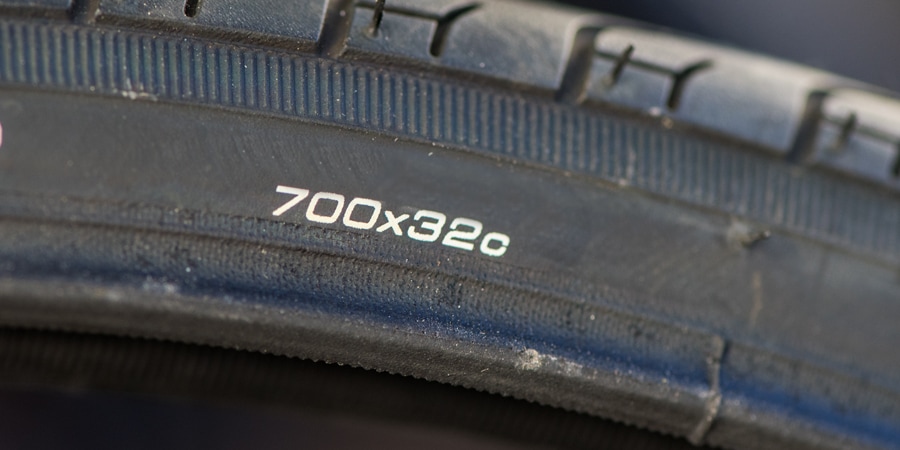
Whether you walk into a bike shop or go comparison-shopping online, you’ll find that tire and wheel sizing comes in three formats.
The first, International Organization for Standardization (ISO) developed with European Tyre and Rim Technical Organization (ETRTO), is the most commonly used bike tire naming systems today.
By the ISO standard, bike wheel and tire sizing refer to the actual diameter (in millimeters) of the wheel itself, not the outside dimensions of the tire that fits it.
ETRTO works with ISO to specify concrete standards for rim and tire sizing across countries and manufacturers. This eliminates the problem of localized sizing systems creating confusion by referring to the same size by multiple names.
The second bike wheel sizing system is the French Standard, which is mostly in use when referencing vintage models.
The letters in French sizes refer to varying widths within the same wheel and tire diameter. A 700C tire would be wider than a 700B tire, for instance.
With the sole exception of 700C (the most common size for today’s standard road bikes), these width notations are no longer in use by modern bike manufacturers.
Finally, the American Standard is the inch-based notation that you see in big-box retailers in the United States. This is the notation you’re the most likely to encounter while shopping for a new bike in the US.
Most Common Bike Wheel Sizes
Today’s bicycle rims and tires come in a vast range of sizes, ranging from a minuscule 12 inches to a larger-than-life 36 inches.
The majority fall into a standard range that starts at 26 inches (or 559 millimeters) and goes all the way up to 29 inches (or 622 mm).
Note: The conversions here are not exact. Standard 29″ wheels are exactly the same as ISO diameter 622mm wheels which are sometimes referred to as 700c wheels. The math is misleading, as 29″ doesn’t equal exactly 622mm. That’s because these measurements don’t refer to the same part of the wheel. 29″ refers to the outer diameter of the wheel, while 622mm refers to the wheel’s bead seat diameter.
Bikes with 24-inch wheels or smaller are typically kids’ bikes, but sometimes specialty rides like BMX bikes.
Meanwhile, oversized bike wheels at 30 inches or larger are typically custom-builds for people with very large frames.
For data geeks, BikeCalc.com has a detailed bike wheel size chart with the most common wheel sizes.
Standard Bike Wheel Sizes
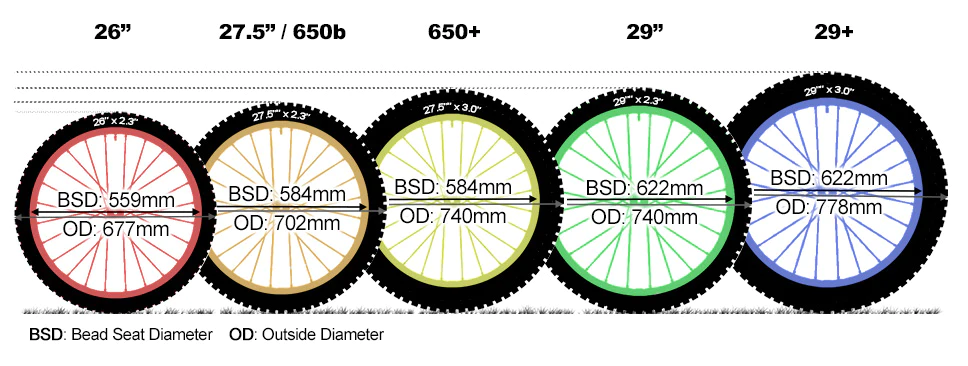
Bicycle wheelset sizes come in standard sizes from 26 to 29 inches. You’ll find standard wheel sizes on road bikes, touring bikes, gravel bikes, and mountain bikes.
The most common standard bike wheel sizes include:
- 26-inch bike wheels, also known as ISO 559
- 27-inch bike wheels, or ISO 630
- 27.5-inch bike wheels, or ISO 584
- 29-inch bike wheels, or 700C, or ISO 622
26-inch Bike Wheels
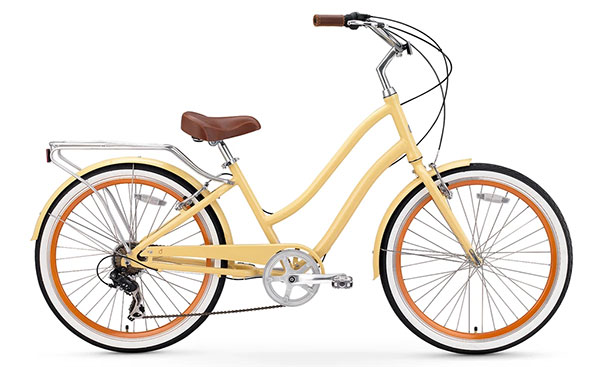
Today’s 26-inch wheels are the standard for hybrids, high-performance folding bikes, and off-road mountain bikes, but they started as the standard for road cruisers back in the early 20th century.
These wheels measure 559 mm, which is the ISO designation for the size.
These compact wheels have a deeper angle of attack, which means they’re not quite as effective at moving over obstacles as 29-inch wheels.
Still, small wheels have less turbulence and less drag than larger wheels due to requiring fewer spokes. This allows 26-inch or 559 mm wheels to achieve high top speeds with fast acceleration and quick maneuvering.
27-inch Bike Wheels

A 27-inch bike wheel is an in-between standard size that appears on mountain bikes, road bikes, and sometimes hybrid bikes.
This diameter-based measurement corresponds to a 27-inch wheel, and it was once the standard for road bikes. The matching ISO size is 630 mm. 27.5-inch (650B) Bike Wheels
A 27.5-inch bike wheel (also known as ISO 584) offers the best balance between lightweight design and a narrow-angle of attack, making it a standard size for mountain bikes.
You may know this size as 650B if you follow the French standard, which is now widely out of use in favor of ISO.
A 650B bike wheel has the weight of a larger wheel with more spokes for stability but is small enough to have fast acceleration and high top speeds without sacrificing its ability to handle trail obstacles.
700c / 29-inch Bike Wheels
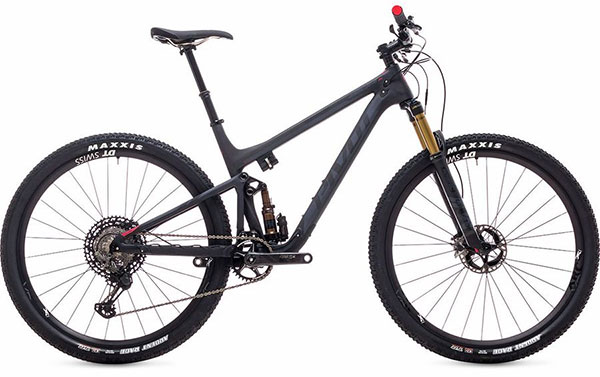
Historically, 29-inch or ISO 622 mm bike wheels were called 700C, a reference to the combination of a 700 mm outside diameter and alternate rim size (adding up to 700 mm).
This is a throwback to the French sizing system that’s now defunct.
Read more: 700c Wheel Size Explained
Today, this size is the standard full-size wheel that comes equipped on nearly every adult-sized road bike worldwide. It’s also a popular choice on folding pavement bikes.
As the largest standard bike rim size, a 622 mm wheel offers 12% more static weight than a 26-inch wheel, keeping it stable on the road.
Its relatively flat angle of attack means this size is one of the best at rolling over obstacles, but the added drag reduces acceleration and control, so it’s not one of the best mountain bike sizes despite its ability to roll over logs and rocks like it’s nothing.
Kids’ Bike Wheel Sizes
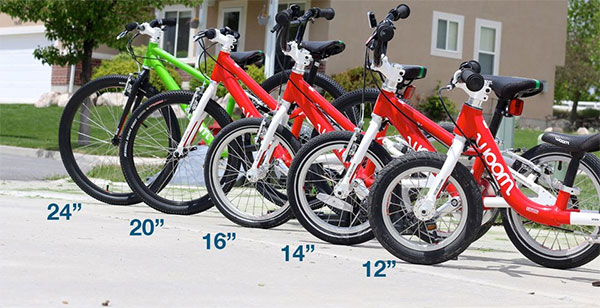
Kids’ bike wheel sizes start at 12 inches and go up to 20 inches—and unlike other bikes, the wheel size of a child’s bike is typically tied to the frame size.
That means a 16-inch kid’s bike wheel always comes on the same size bike frame (barring custom or nonstandard bikes).
12-Inch Bike Wheels
The smallest children’s bike wheel size, a 12-inch bike wheel is usually found on training bicycles for toddlers and young kids.
These bikes are best suited for most three-year-olds and some four-year-olds. They almost always come with training wheels (except for kids’ balance bikes).
16-Inch Bike Wheels
A bike with 16-inch wheels is the right size for most four- and five-year-olds. Your three-year-old may fit a 16-inch bike if they are tall for their age.
20-Inch Bike Wheels
20 inches is the most common bike size for kids that are six and seven years old. If you have a tall five-year-old, they might fit on this size bike as well.
24-Inch Bike Wheels
This size is where the line starts to blur between adult and kid sizing as many children start to approach their adult bike size. Children ages eight to ten often do well on a 24-inch bike, but adults around or under five feet may also benefit from this size.
Other Bike Wheel Sizes
Nonstandard bike wheels are used on BMX bikes, folding bikes, junior bikes, and oversized bikes.
You may need a nonstandard bike wheel size if you:
- Need to cover obstacle-heavy ground
- Want high top speeds and quick acceleration
- Want an ultra-portable or folding bike
- Are a BMX cyclist who needs sharp handling and control
- Are taller or shorter than the average person (or a child!)
The Smallest Bike Wheel Sizes for Adult Cyclists
You might be a candidate for a smaller wheel size if you’re a traveler in need of a folding bike, a BMX cyclist who needs ultimate control over every movement, or if you’re looking to gain every possible millisecond of speed advantage.
The benefits of a small bike wheel size include:
- Faster acceleration due to low weight
- Greater top speed due to low drag
- Precise control due to the increased responsivity of a smaller wheel
- Easy portability due to small size and low weight
16-inch Bike Wheels
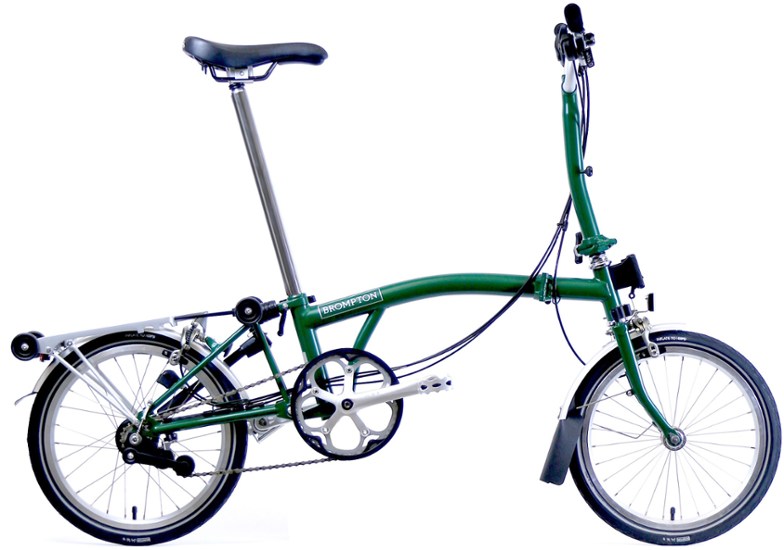
The majority of 16-inch bike wheels (or ISO 305 mm) you encounter are on children’s bikes, but by no means are all small bikes for kids. That being said, there are limited uses for 16-inch bike wheels.
Almost all adult bikes with 16-inch wheels are compact folding bicycles. The primary draw is lightweight and ease of traveling, but at the expense of ride quality.
The problem with wheels this small is that they’re adversely affected by even the slightest obstacles on the road. They also have real trouble handling hills due to their need for a higher gear ratio.
Additionally, the handling can be problematic, since the turning radius is so small with a 305 mm wheel diameter, causing steering to be oversensitive.
This oversensitivity is a benefit if you’re a BMX biker looking to get added control over your steering column, but not so much for the casual rider.
20-inch Bike Wheels
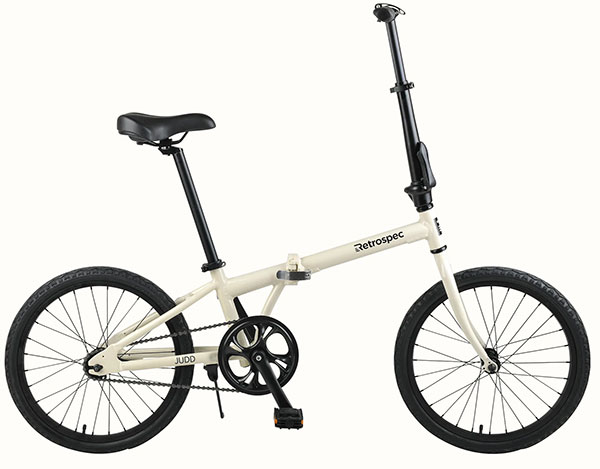
Apart from kids’ bikes, 20-inch bike wheels are most commonly spotted on BMX bikes and folding bikes.
For the normal rider looking to use a folding bike as a primary traveling road bike, the 20-inch bike wheel can be an inconvenience for a few reasons. The extra-long handlebar stem of a small-wheel bike leads to handling problems from the small turn radius.
However, this size is ideal for BMX bikers looking for an extra-sensitive steering column that supports aerial tricks and more.
24-inch Bike Wheels
24 inches isn’t quite a rare bike wheel size, but it’s close—it’s mostly only found on junior mountain bikes and BMX bikes designed to accommodate larger riders.
That being said, mountain biking is more inclusive toward young riders than ever, and BMX is growing in popularity, leading to a demand in nonstandard wheel sizes for these frame types.
A 24-inch bike wheel corresponds to 507 mm, which is the ISO designation for this size.
The Largest Bike Wheel Sizes
Small sizes aren’t the only nonstandard wheels offering tailored fit and features for cyclists with specific needs. Large bike wheels offer a host of their own benefits, including:
- Low angle of attack, which means a greater ability to handle trail obstacles
- High stability due to increased spokes and more ground contact
- Consistent speed due to the drag from the increased weight
The most common oversized bike wheel sizes are 32 inches and 36 inches.
32-inch Bike Wheels
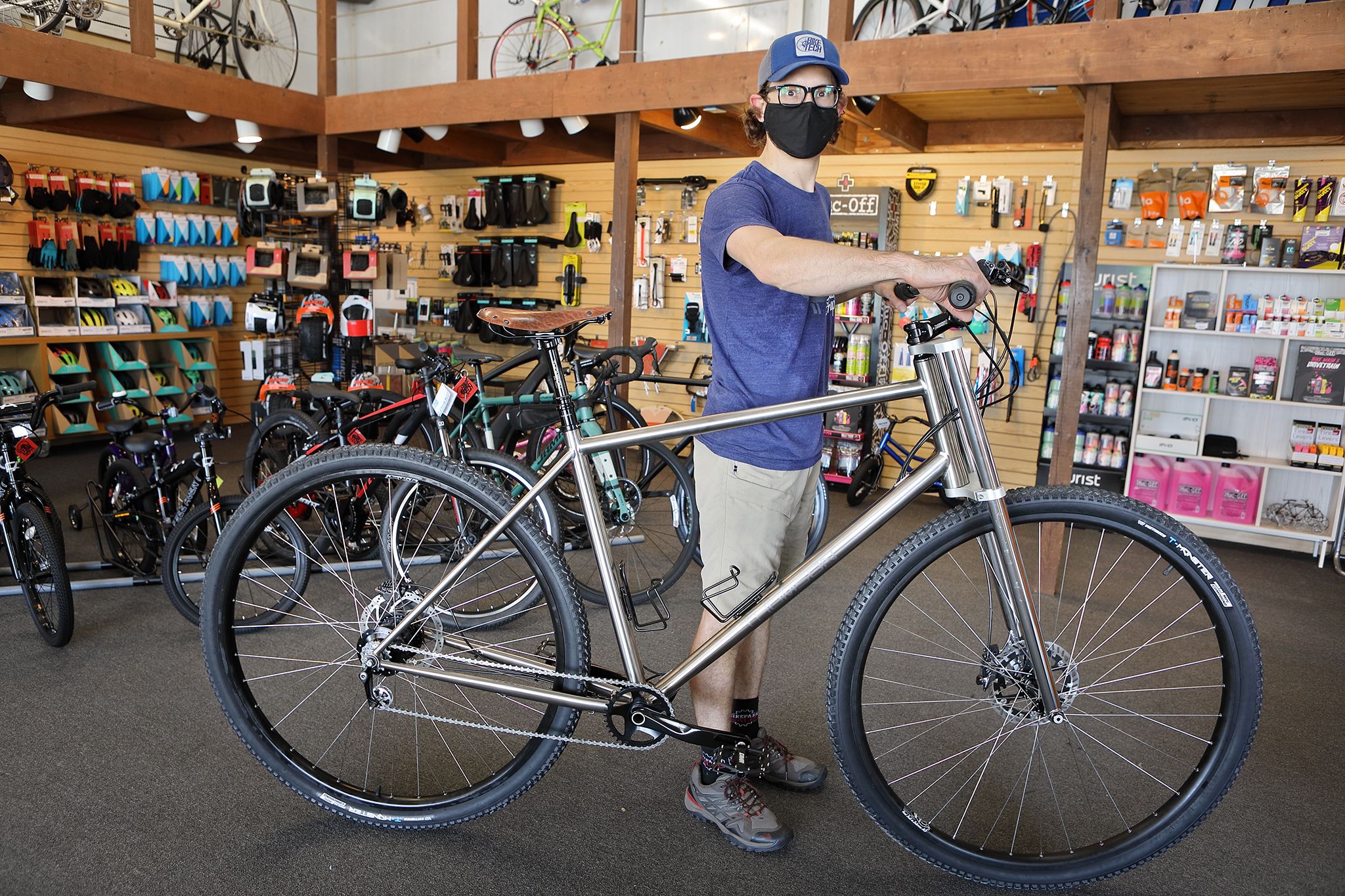
The 32 inch or ISO 686 bike wheel size is incredibly uncommon to find on a production bike. Nearly every bike that’s larger than 30 inches is a custom model, typically built for riders over 6’6” in height.
Shaquille O’Neal’s custom 32-inch bike wheel is the most famous example. Shaq also owns bikes with 36-inch wheels, the largest oversized custom wheel size.
36-inch Bike Wheels
A wheel that’s three feet in diameter isn’t easy to imagine for the average person, but for someone who’s tall enough, it’s a necessity for basic cycling.
It’s rare to find a 36-inch (ISO 787 mm) bike wheel period, and they simply don’t exist in production frames. If you’re tall enough to need a wheel of this diameter, then custom frames are your surest option.
Tips for Bicycle Tire and Rim Sizing
It’s normal to have questions if you’re a novice at sizing bicycle wheels and rims. After all, bicycles didn’t have standardized sizing for their entire inception.
Even now, wading between American and ISO sizing can get confusing for the average shopper.
Related: Bicycle Wheel Building Guide
Knowledge is power in every hobby, cycling included. These tips for bicycle tire and rim sizing cover the most common information you’ll need:
- Choose your size range based on your riding style, not the other way around. For instance, BMX bikes and mountain bikes aren’t even in the same range.
- Most road cyclists do well with a 25 mm rim width, which offers a balance between performance and stability.
- Racing cyclists can benefit from a smaller width rim, usually 23 mm, for the added acceleration and top speed.
- Off-road cyclists should consider wider rims for added stability, often 28 mm.
- To find the size of a wheel you have, measure the distance between the axle assembly and the outer rim.
- Consult a bicycle specialist in person if you have any doubts about tire and rim sizing for your body size and preferred style.
If you are looking for more information, check out our article on how to choose bike tires.




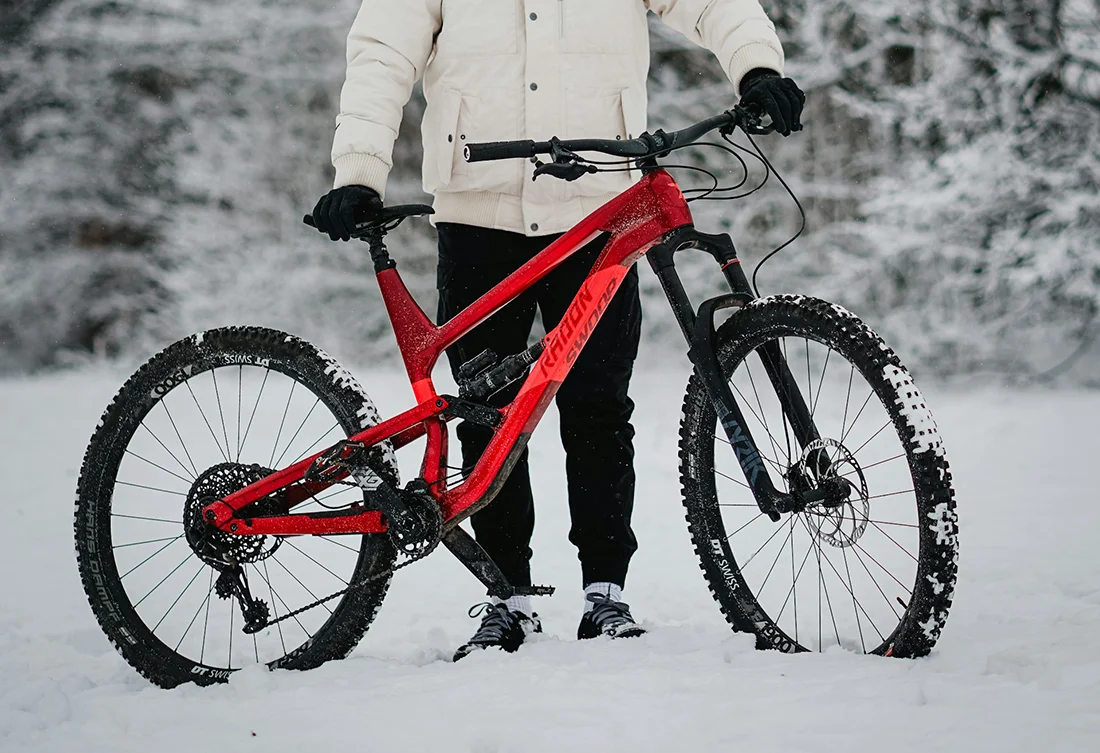
Hi Jeff, great post, but some info need editing for the 36″: production bikes exists, DirtySixer bikes have been making them for years, that what Shaq owns (two DirtySixer bikes actually, and these are not 32″) along with many other NBA players. These big wheels are indeed very relevant and proportionate of your on the really tall side! 32 inch is coming soon, it will be for the simply tall.